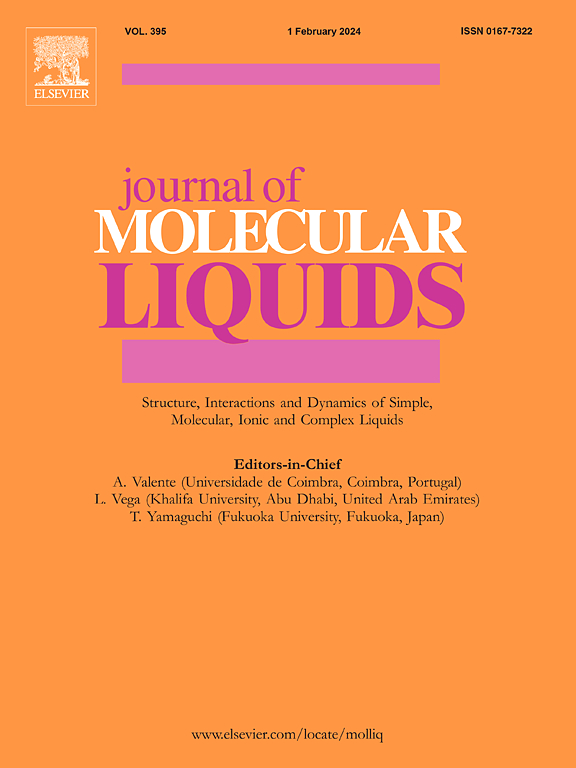Stable aggregated silver nanoparticle in water with strong and wavelength-tunable localized surface plasmon resonance for liquid-state SERS substrates
IF 5.3
2区 化学
Q2 CHEMISTRY, PHYSICAL
引用次数: 0
Abstract
A simple method is developed for the direct synthesis of aggregated silver nanoparticles (a-AgNPs), which show strong and wavelength-tunable localized surface plasmon resonance (LSPR). Three a-AgNPs (532-a-AgNPs, 633-a-AgNPs and 787-a-AgNPs) exhibiting the maximum LSPR wavelength coinciding well with those of lasers commonly used in SERS detection (532, 633 and 785 nm) are obtained. Thus, the three a-AgNPs possess abundant plasmonic hotspots under the irradiation of corresponding laser. Moreover, the three a-AgNPs show robust stability in water, and can be developed into liquid substrates directly for SERS determination. All the three substrates (532-sub, 633-sub, and 787-sub) show excellent SERS activity to 4-mercaptobenzoic acid (4-MBA) due to the synergistic effect of strong electromagnetic enhancement (EM) and chemical enhancement (CM) effects. The obtained 787-sub is further applied for the determination of thiram in juices. The low detection limit of 10 ppb and outstanding recoveries of 91.75–109.92 % suggest substantially the reliability and practicality of the developed SERS substrates in food safety detection.

求助全文
约1分钟内获得全文
求助全文
来源期刊

Journal of Molecular Liquids
化学-物理:原子、分子和化学物理
CiteScore
10.30
自引率
16.70%
发文量
2597
审稿时长
78 days
期刊介绍:
The journal includes papers in the following areas:
– Simple organic liquids and mixtures
– Ionic liquids
– Surfactant solutions (including micelles and vesicles) and liquid interfaces
– Colloidal solutions and nanoparticles
– Thermotropic and lyotropic liquid crystals
– Ferrofluids
– Water, aqueous solutions and other hydrogen-bonded liquids
– Lubricants, polymer solutions and melts
– Molten metals and salts
– Phase transitions and critical phenomena in liquids and confined fluids
– Self assembly in complex liquids.– Biomolecules in solution
The emphasis is on the molecular (or microscopic) understanding of particular liquids or liquid systems, especially concerning structure, dynamics and intermolecular forces. The experimental techniques used may include:
– Conventional spectroscopy (mid-IR and far-IR, Raman, NMR, etc.)
– Non-linear optics and time resolved spectroscopy (psec, fsec, asec, ISRS, etc.)
– Light scattering (Rayleigh, Brillouin, PCS, etc.)
– Dielectric relaxation
– X-ray and neutron scattering and diffraction.
Experimental studies, computer simulations (MD or MC) and analytical theory will be considered for publication; papers just reporting experimental results that do not contribute to the understanding of the fundamentals of molecular and ionic liquids will not be accepted. Only papers of a non-routine nature and advancing the field will be considered for publication.
 求助内容:
求助内容: 应助结果提醒方式:
应助结果提醒方式:


